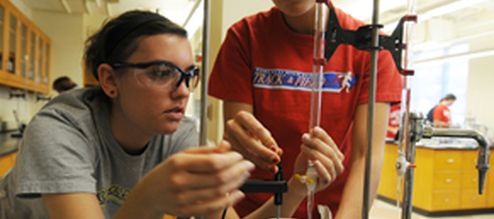Document Type
Article
Publication Date
4-2011
Publication Source
Computational and Theoretical Chemistry
Abstract
Moringa oleifera, sometimes called the “Miracle Tree,” has received international attention for its potential to improve health in impoverished tropical areas. In addition to high vitamin content in the leaves and pods, the tree contains compounds with antioxidant and antibacterial properties. This study focused on the theoretical investigation of the suggested structure of one antibacterial compound, “pterygospermin,” whose existence was proposed after some studies of the roots of M. oleifera. The structure of pterygospermin was first proposed by a research group working in the 1950s, but later studies have not found evidence of this compound and have instead attributed the antibacterial properties of Moringa to isothiocyanates. In order to investigate the possible existence and properties of pterygospermin, extensive ab initio and DFT calculations were conducted, to determine the most favorable isomer of pterygospermin and examine plausible decomposition pathways. This study concludes that pterygospermin, as proposed, would not be stable enough to exist in ambient conditions.
Inclusive pages
196-201
ISBN/ISSN
2210-271X
Document Version
Postprint
Copyright
Copyright © 2011, Elsevier.
Publisher
Elsevier
Volume
965
Peer Reviewed
yes
Issue
1
eCommons Citation
Horwath, Michael and Benin, Vladimir, "Theoretical Investigation of a Reported Antibiotic from the 'Miracle Tree' Moringa Oleifera" (2011). Chemistry Faculty Publications. 16.
https://ecommons.udayton.edu/chm_fac_pub/16
Included in
Analytical Chemistry Commons, Biochemical Phenomena, Metabolism, and Nutrition Commons, Chemical and Pharmacologic Phenomena Commons, Environmental Chemistry Commons, Inorganic Chemistry Commons, Materials Chemistry Commons, Medical Biochemistry Commons, Medicinal-Pharmaceutical Chemistry Commons, Organic Chemistry Commons, Other Chemistry Commons, Physical Chemistry Commons




Comments
The document available for download is the authors' accepted manuscript, posted here in compliance with the publisher's policy on self-archiving.
Some differences may exist between this version and the publisher's version; as such, researchers wishing to quote directly from it are advised to consult the version of record, available at many libraries or from the publisher.
Permission documentation is on file.